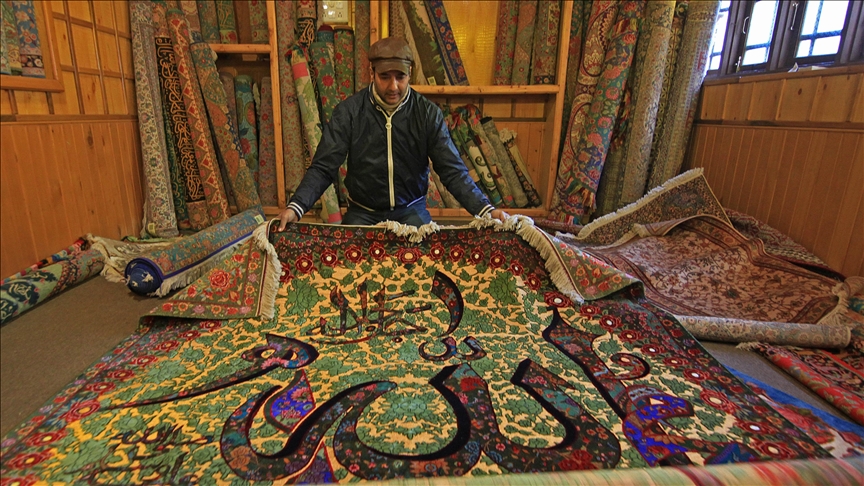Global Conflicts and Trade Policies Threaten the Valley’s Iconic Handicrafts
Srinagar, 09 April 2025: A Struggling Legacy
Kashmir’s famed carpet industry, renowned for its exquisite hand-knotted silk creations, is grappling with severe challenges as global conflicts and trade policies disrupt its operations. Once a thriving sector, the industry now faces declining exports, shrinking markets, and mounting financial strain, threatening the livelihoods of thousands of artisans and exporters.
Impact of Global Conflicts
The Russia-Ukraine war has emerged as a major blow to Kashmir’s carpet trade. Russia, a key market for high-value Kashmiri carpets, has significantly scaled back imports due to economic instability and reduced consumer demand. European countries, which also account for a substantial share of exports, have followed suit, further exacerbating the crisis.
According to Sheikh Ashiq, a prominent carpet exporter and former president of the Kashmir Chamber of Commerce and Industries (KCCI), the trade volume has plummeted by over 70%. “Russia is our identified market. High-value hand-knotted Kashmiri carpets have a strong presence there, but ever since the war began, demand has dropped drastically. Buyers are holding back their orders,” Ashiq explained.
Tariff Troubles
Adding to the industry’s woes is the 26% reciprocal tariff imposed by the United States on Indian goods, including carpets. This policy has made Kashmiri carpets more expensive in the US market, leading to a decline in shipments. Javed Ahmad Tenga, president of KCCI, highlighted the challenges faced by exporters: “Given the current situation, we have decided to seek interest subvention from the government,” he stated.
The tariffs have not only strained trade relations but also impacted the competitiveness of Kashmiri carpets in international markets. Exporters are struggling to maintain their foothold, with many forced to scale down operations or exit the trade altogether.
A Declining Industry
The downturn in the carpet industry is starkly evident in export figures. In 2017, Kashmir’s handmade carpet exports peaked at ₹821.50 crore, making it the region’s leading export sector. By the financial year 2023–24, this figure had declined sharply to ₹317 crore. The number of exporters has also dwindled, with only a handful remaining active in the trade.
Historical Significance
The tradition of hand-knotted carpets in Kashmir dates back to the 15th century, during the reign of Sultan Zain-ul-Abidin. Skilled weavers from Persia and Central Asia introduced the craft, which has since become an integral part of the region’s cultural heritage. Budgam district, with its 634 carpet units, remains a hub for this art form.
Looking Ahead
As the industry faces one of its most challenging periods, stakeholders are calling for urgent intervention. Measures such as financial support, interest subvention, and trade policy adjustments are being explored to revive the sector. The government’s role in safeguarding this legacy and supporting artisans will be crucial in ensuring the survival of Kashmir’s iconic carpet industry.




